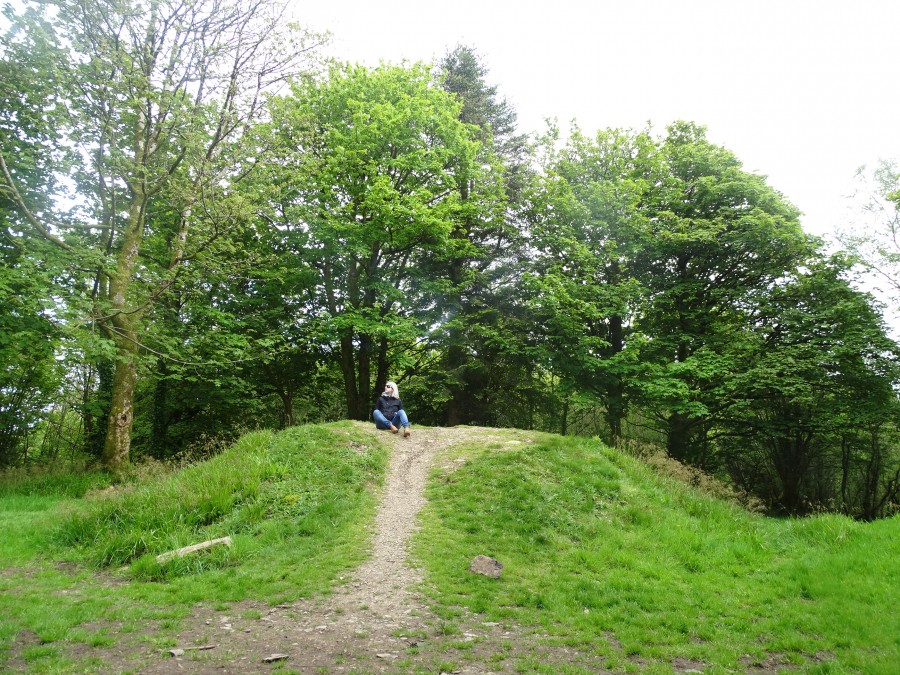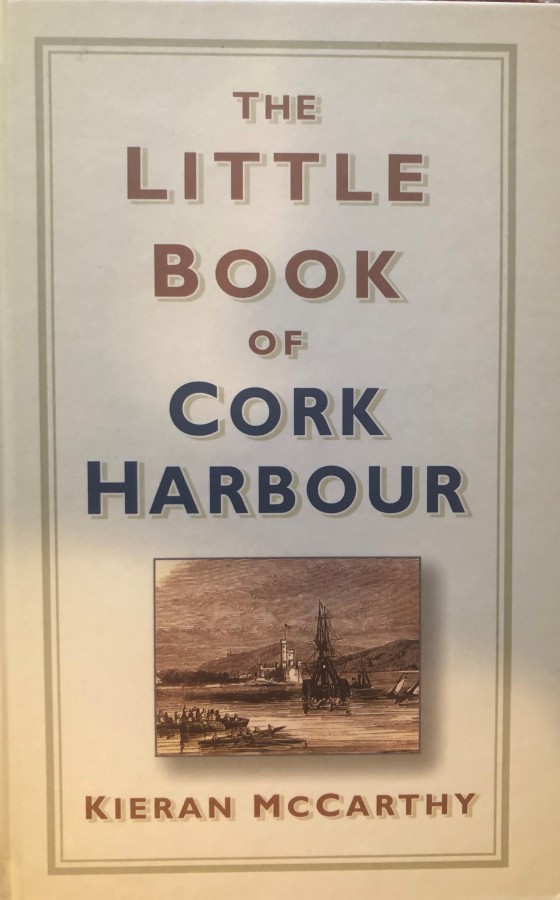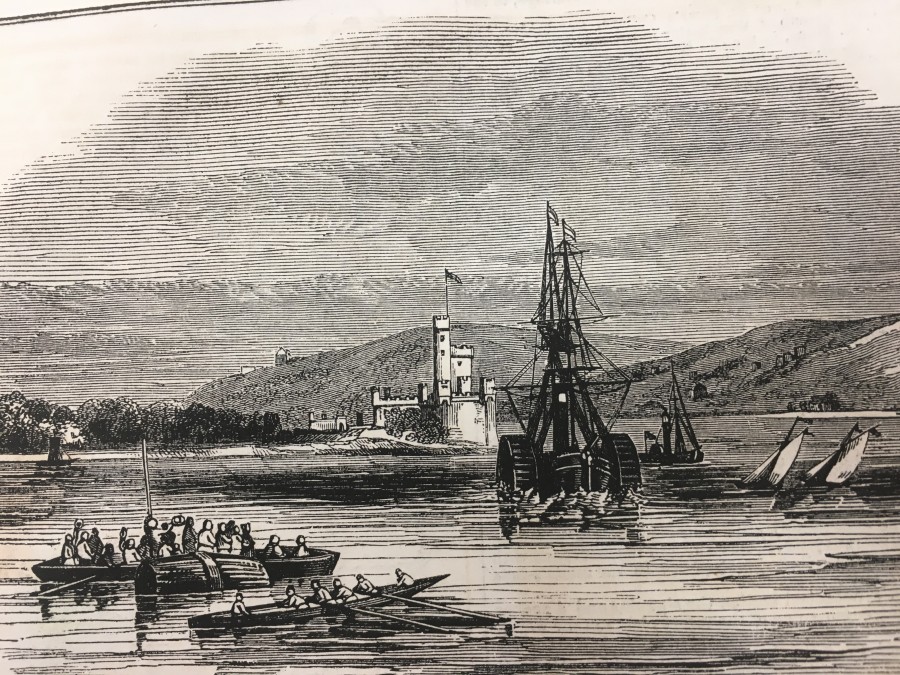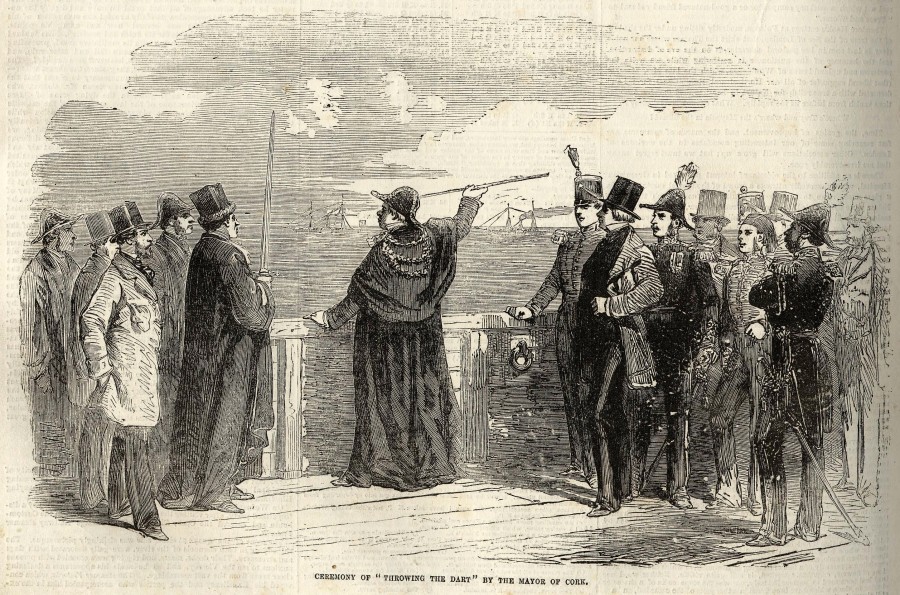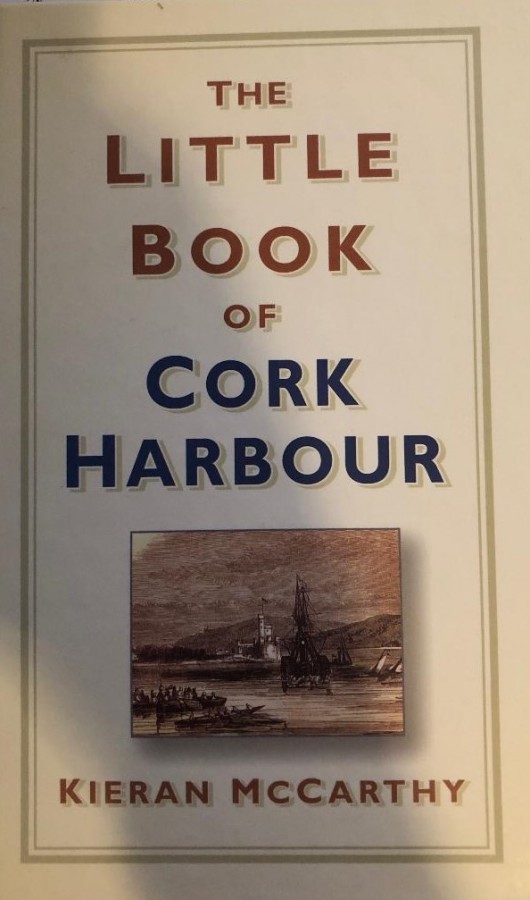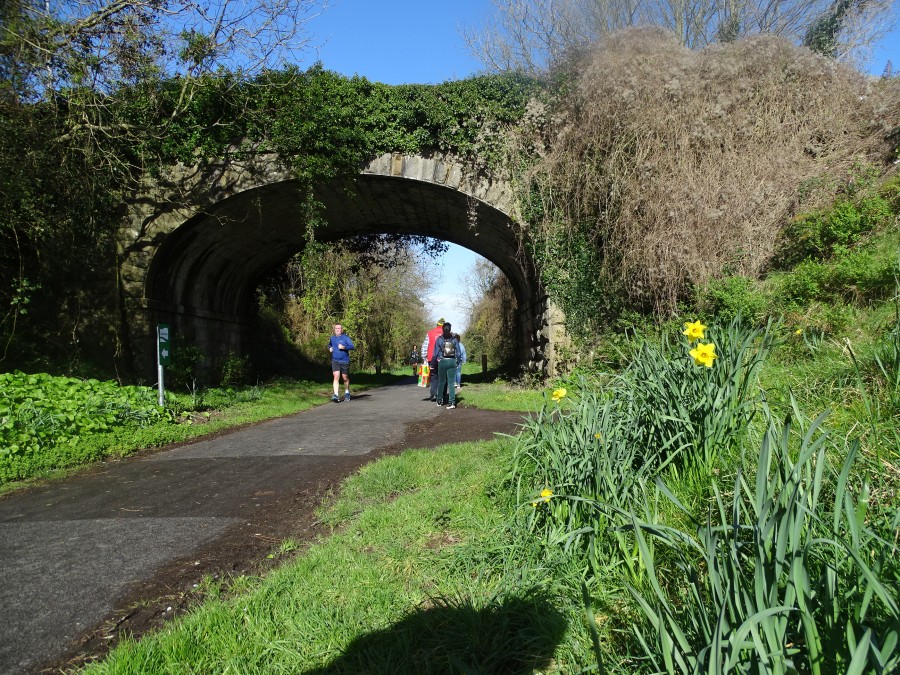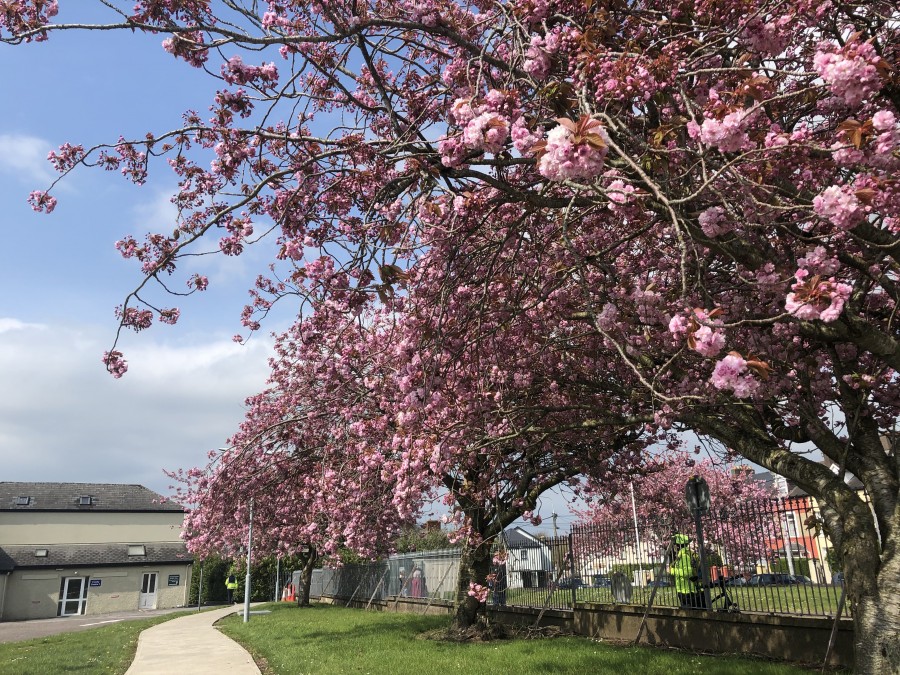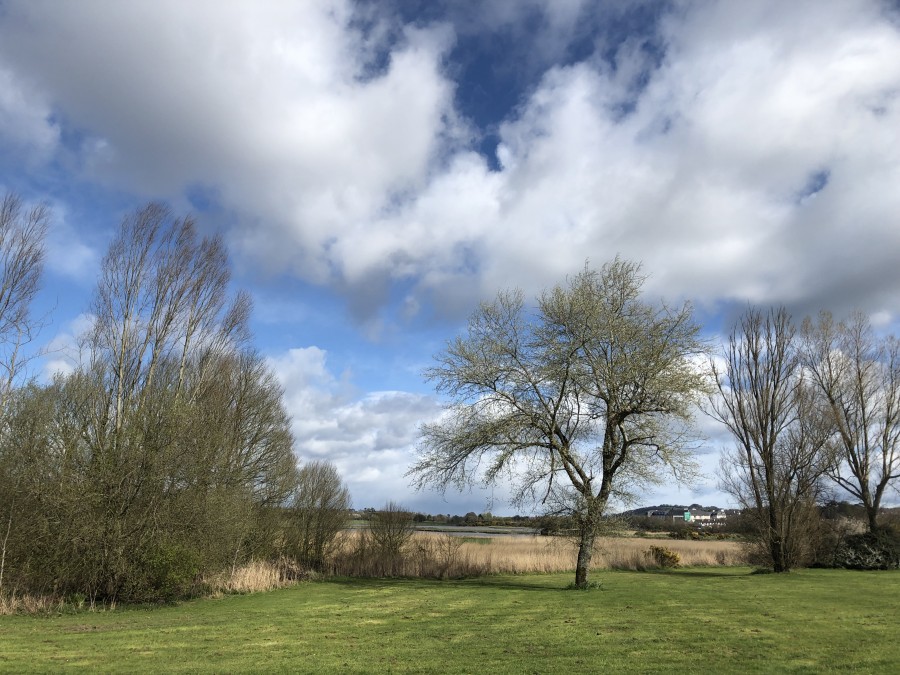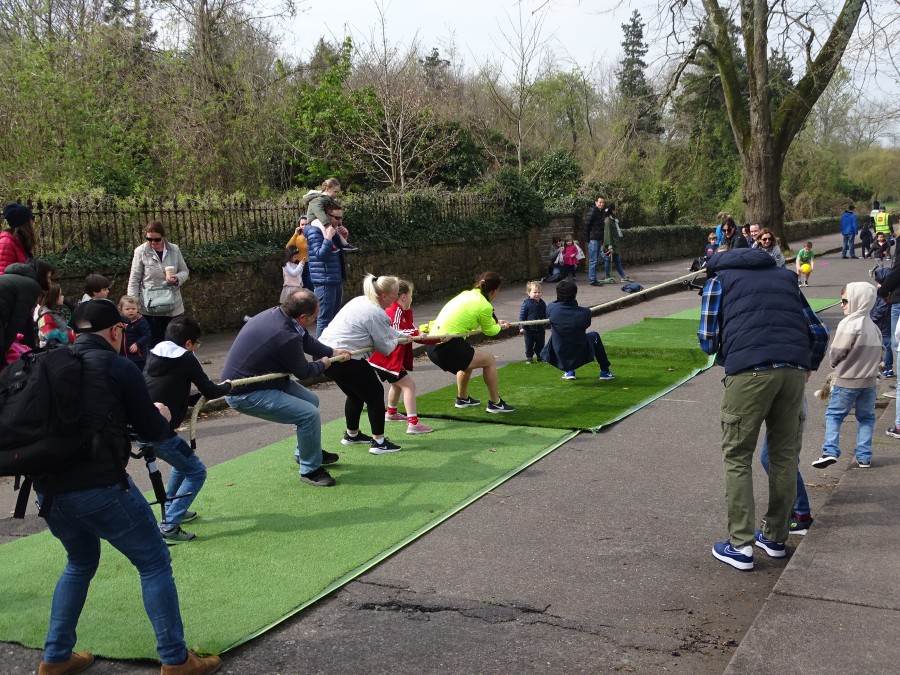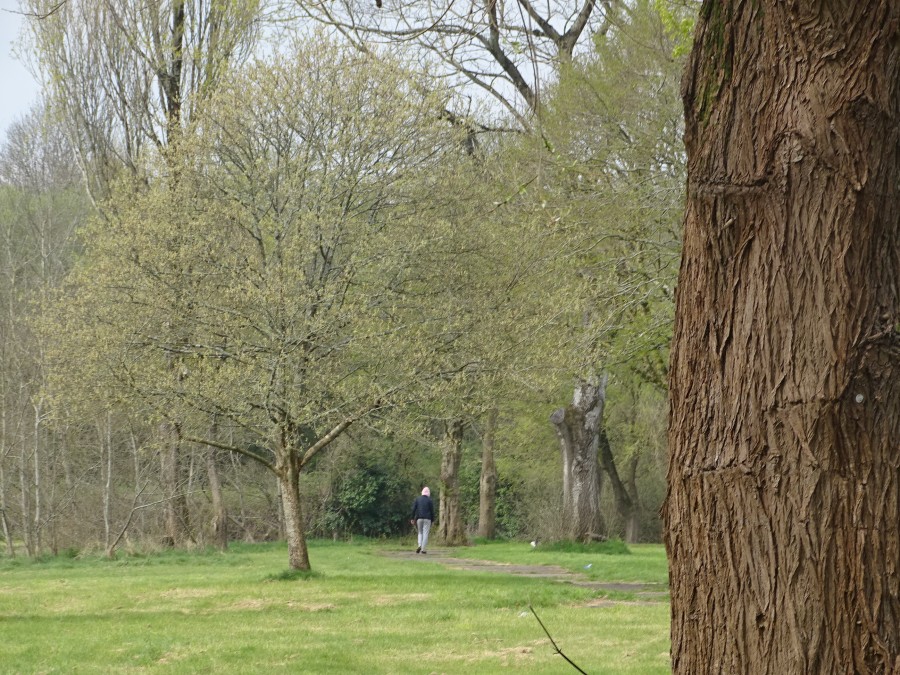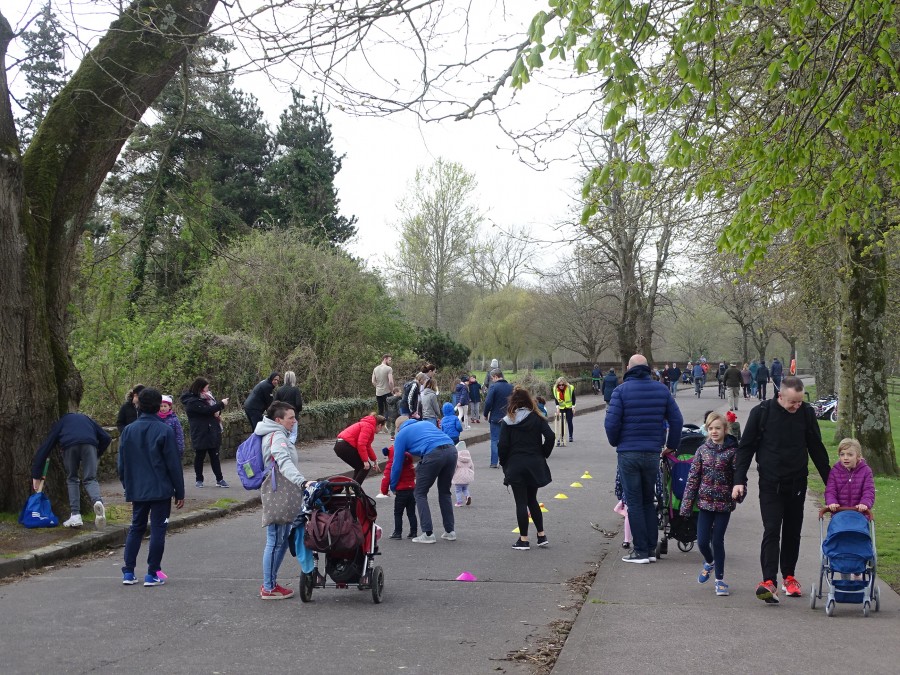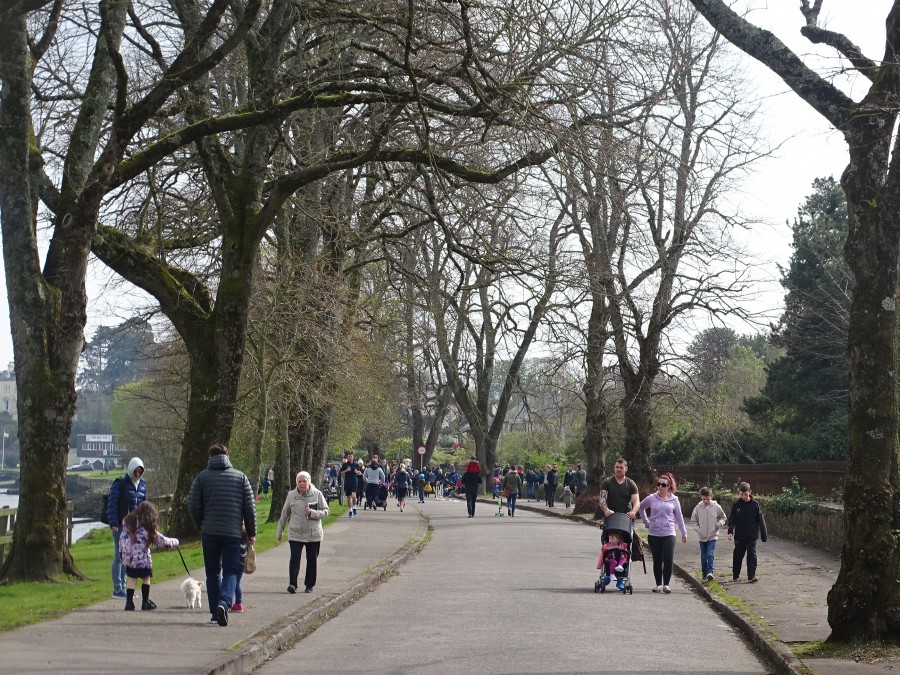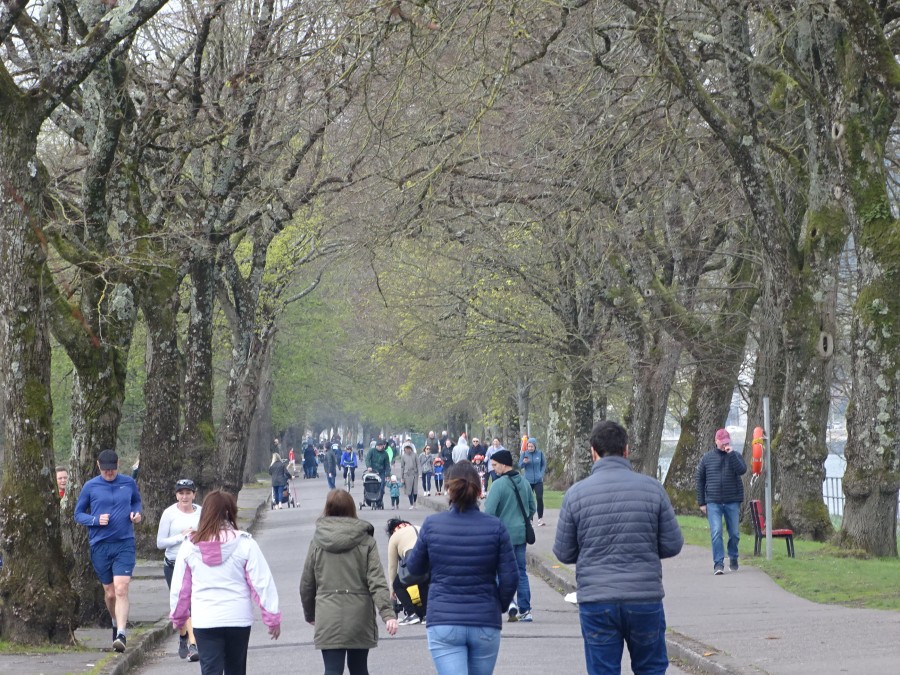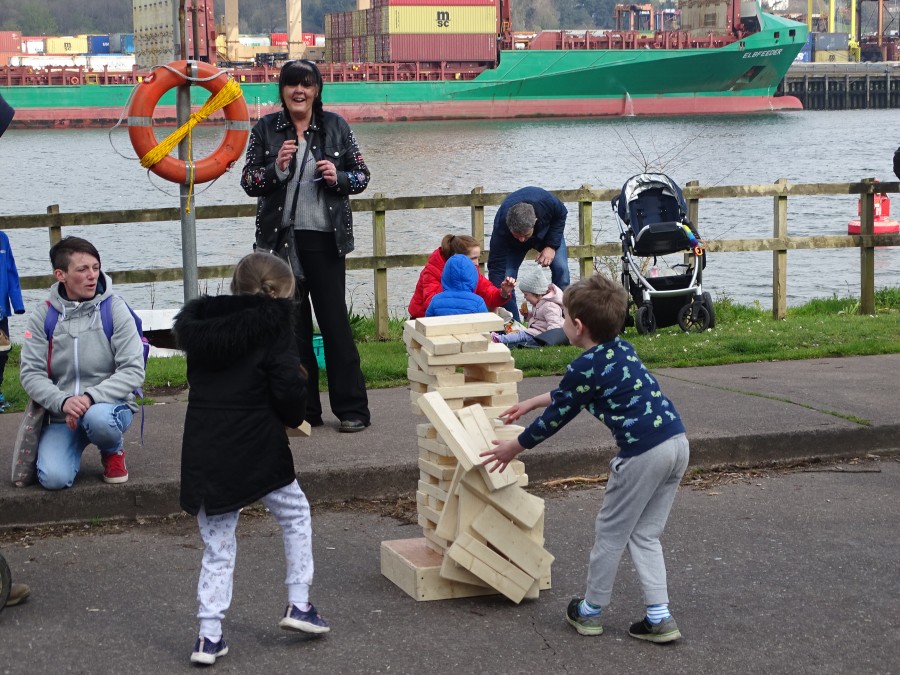Category Archives: S.E. Ward Local History
Reaching the End, 23 May 2019
Kieran’s Our City, Our Town Article, 23 May 2019
Kieran’s Our City, Our Town Article,
Cork Independent, 23 May 2019
Prehistoric Cork Harbour
My new book The Little book of Cork Harbour has recently been published by The History Press (2019). Following on from last week, below is another snippet from the book– focussing on some aspects of the prehistoric human activity in the harbour.
The Mesolithic Harbour:
About ten thousand years ago, the first human settlers, hunter-gatherers of the Mesolithic or Late Stone Age era came to Cork Harbour. Just over 25 shell midden sites are marked on maps created by the archaeological inventory of Cork Harbour – some of these have not survived; some survive just in local folklore. Some have been excavated throughout the twentieth century. There have also been unrecorded sites eroded away by the tide or by cliff collapse. Shell midden sites consist of refuse mounds or spreads of discarded sea-shells and are normally found along the shoreline. Shellfish were exploited as a food source and sometimes as bait or to make dye. In Ireland shell middens survive from as early as the Late Mesolithic but many of the Cork Harbour oyster middens have also been dated to medieval times while some have produced post-medieval pottery dates.
Over a quarter of all identified middens in the Cork Harbour area are to be found at eight locations in Carrigtwohill parish. When surveyed by the archaeologist Reverend Professor Power in 1930 a midden on Brick lsland (in the estuary to the north of Great Island, joined to mainland by narrow neck of land) measured five or six feet thick at the terraced shore edge and extended along the foreshore for over one hundred and eighty yards and inland for seventy or eighty feet. It contained nearly pure oyster shells with occasional cockle, mussel, whelk and other marine shells. Thin layers of charcoal were visible in many places and stone pounders or shell openers visible in many places.
In 2001, archaeological monitoring of a 15-hectare greenfield site at Carrigrenan, Little Island, was carried out prior to the construction of a waste water treatment plant by Cork Corporation. Two shell spreads along the western seashore perimeter of the site were noted. A polished stone axe was recovered during topsoil monitoring and has been given a possible late Mesolithic date. All other finds were random pottery, eighteenth to twentieth century in date.
Smaller middens for example at Curraghbinny, Currabally and Rathcoursey reflect shorter periods of use. At the western end of Carrigtwohill in 1955, archaeologist M J O’Kelly prior to the construction of a new school excavated oyster shells, few animal bones and fragments of glazed pottery dating to late thirteenth century /early fourteenth century.
The Mystery of the Rostellan Dolmen:
Described as enigmatic by Cork archaeologists, the dolmen in Rostellan in eastern Cork Harbour is similar to portal tombs but here cannot be confidently identified as such. The monument has three upright stones and a capstone, which at one time fell down but was later re-positioned. The site gets flooded at high tides and is difficult to get to across the local mudflats. It is easier to get to it with a guide through the adjacent Rostellan wood. The wood was created as part of the former estate of Rostellan House. The house was built by William O’Brien (1694-1777) the 4th Earl of Inchiquin in 1721. The Dolmen could be a folly on the estate. There is a folly in the shape of a castle tower, named Siddons Tower, after the Welsh-born actress Sarah Siddons, nearby.
The Giant’s Circle:
The name Curraghbinny in Irish is “Corra Binne”, which is reputedly named after the legendary giant called Binne. Legends tells that his cairn (called a “Corra” in Irish) is located in a burial chamber atop the now wooded hill. The cairn is not marked in the first edition Ordnance Survey map, but its existence was noted during the original survey in the Name Books compiled at that time. John Windle, the well-known Cork writer and antiquarian of the early nineteenth century, mentions the site in his publications. There is no record though in his printed works or in his manuscripts preserved in the Royal Irish Academy Library of any digging having taken place at the cairn.
In 1932 archaeologist Seán P Ó Riordáin and his team excavated the 70 feet in diameter cairn (with its greatest height being 7 ½ feet). On one flat stone forming part of the inner arc they found a group of about one hundred pebbles, water-rolled, and such as would come from a brook, while a second group of about sixty pebbles was found just north of the western end of the arc. At the centre of the mound they came upon a peculiar structure of stones and clay. The clay was raised to a height of about 4 inches above the surrounding surface, and the stones were embedded in it.
The most interesting discovery was made on the south side of the cairn. In a space between two stones of the kerb and a third lying just inside the team found, mixed with a thick layer of charcoal, some burnt bone fragments. Examination proved these to be human. The charcoal deposit with which the bones were found mixed did not extend under the neighbouring large stones. This showed that the fire was lit after the boulders had been placed in position. The cremated human bone found nearby was carbon dated roughly to be 4,000 years old. A small bronze ring, about five-eighths of an inch in diameter, was found outside the kerb on the south-east side.
The Little Book of Cork Harbour (2019) by Kieran McCarthy is published by The History Press and is available in Waterstones, Vibes and Scribes and Easons.
Next Walking Tour:
Saturday 9 June, Stories from Cork Docklands, historical walking tour with Kieran; meet at Kennedy Park, Victoria Road 2pm, free, duration, two hours, part of the Cork Harbour Festival and Sea Fest, finishes nearby.
Captions:
998a. Rostellan Dolmen, c.1900 (source: Cork City Museum)
998b. Rostellan Dolman, present day (picture: Kieran McCarthy)
998c. Curraghbinny Cairn, present day (picture: Kieran McCarthy)
Kieran’s Our City, Our Town, 16 May 2019
Kieran’s Our City, Our Town Article,
Cork Independent, 16 May 2019
The Little Book of Cork Harbour
My new book The Little book of Cork Harbour has recently been published by The History Press (2019). Cork Harbour is a beautiful region of southern Ireland. It possesses a rich complexity of natural and cultural heritage. This is a little book about the myriad of stories within the second largest natural harbour in the world. It follows on from a series of my publications on the River Lee Valley, Cork City and complements the Little Book of Cork (History Press, Ireland, 2015). It is not meant to be a full history of the harbour region but does attempt to bring some of the multitudes of historical threads under one publication. However, each thread is connected to other narratives and each thread is recorded to perhaps bring about future research on a site, person or the heritage of the wider harbour.
The book is based on many hours of fieldwork and also draws on the emerging digitised archive of newspapers from the Irish Newspaper Archive and from the digitalised Archaeological Survey of Ireland’s National Monument’s Service. Both the latter digitised sources more than ever have made reams and reams of unrecorded local history data accessible to the general public.
In Cork Harbour colourful villages provide different textures and cultural landscapes in a sort of cul-de-sac environment, with roads ending at harbours and car parks near coastal cliff faces and quaysides. The villages are scattered around the edges of the harbour, each with their own unique history, all connecting in some way to the greatness of this harbour. Walking along several junctures of fields, one can get the feeling you are at the ‘edge of memory’. There are the ruins of old structures that the tide erodes away. One gets the sense that a memory is about to get swept away by the sea, or that by walking in the footsteps trodden by writers, artists and photographers 100 years ago, one could get carried away by their curiosity.
On any good weather day, there are parts of the region where one can almost drive across its sun kissed mudflats. From the Cork-Midleton dual carriage way you get to appreciate farmer’s attempts of reclamation through the ages and the broad mudflats which serve as a home for international bird habitats. There are sections of the harbour to be viewed from the road, which seem almost forgotten. I am a big fan of the Smith Barry tower house folly, which belonged to Fota House estate and which exists on the edge of the Fota golf course.
For centuries, people have lived, worked, travelled and buried their dead around Cork’s coastal landscapes. The sea has been used a source of food, raw materials, as a means of travel and communications and as a place to build communities. Despite this, the harbour has very distinct localities and communities. Some are connected to each through recreational amenities such as rowing or boating and some exist in their own footprint with a strong sense of pride. Some areas such as Cobh and the military fortifications have been written about frequently by scholars and local historians whilst some prominent sites have no words of history or just a few sentences accorded to their development.
In the new book the section, Archaeology, Antiquities and Ancient Towers explores the myriad of archaeological finds and structures, which survive from the Stone Age to post medieval times. Five thousand years ago, people made their home on the edge of cliffs and beaches surrounding the harbour. In medieval times, they strategically built castles on the ridges overlooking the harbour.
The section, Forts and Fortifications, explores the development of an impressive set of late eighteenth-century forts and nineteenth century coastal defences. All were constructed to protect the interests of merchants and the British Navy in this large and sheltered harbour.
The section, Journeys Through Coastal Villages, takes the reader on an excursion across the harbour through some of the region’s colourful towns. All occupy important positions and embody histories such as native industries, old dockyards, boat construction, market spaces, whiskey making and food granary hubs. Each add their own unique identity in making the DNA of the harbour region.
The sections, Houses, Gentry and Estates and People, Place and Curiosities, respectively are at the heart of the book and highlight some of the myriad of people and personalities who have added to the cultural landscape of the harbour.
The section, Connecting a Harbour, describes the ways the harbour was connected up through the ages, whether that be through roads, bridges, steamships, ferries, or winch driven barges.
The eighth section, Tales of Shipping, attempts to showcase just a cross-section of centuries of shipping, which frequented the harbour; some were mundane acts of mooring and loading up goods and emigrants but some were eventful with stories ranging from convict ships and mutiny to shipwrecks and races against time and the tide.
The section entitled Industrial Harbour details from old brickworks, ship buildings to the Whitegate Oil refinery. Every corner of the harbour has been affected by nineteenth century and twentieth century industries.
The last section Recreation and Tourism notes that despite the industrialisation, there are many corners of the harbour where GAA and rowing can be viewed as well as older cultural nuggets such as old ballrooms and fair grounds. This for me is the appropriate section to end upon. Cork Harbour is a playground of ideas about how we approach our cultural heritage, how were remember and forget it, but most of all how much heritage there is to recover and celebrate.
The Little Book of Cork Harbour (2019) by Kieran McCarthy is published by The History Press and is available in Waterstones, Vibes and Scribes and Easons.
Upcoming Walking Tour:
Saturday 19 May 2019, Douglas and its History, meet in the carpark of Douglas Community Centre, 11am (free, duration: two hours, circuit of village, finishes nearby).
Captions:
997a. Front cover of The Little Book of Cork Harbour (The History Press, 2019) by Kieran McCarthy.
997b. Blackrock Castle, 1843 from Illustrated London News (source Cork City Library).
997c. Throwing the Dart ceremony with Mayor and officials, at the mouth of Cork Harbour, 1855 from Illustrated London News (source Cork City Library).
Cllr McCarthy Goes Poster Free
Independent Councillor and local election candidate Kieran McCarthy has gone poster free on poles across the south east local electoral area. Commenting “the public backlash against the use of posters in the electoral area of Cork City is vast- especially after the recent blitzing of large posters in the area. I have been particularly inspired by the work of Douglas Tidy Towns who have advocated the non-posting of posters in Douglas Village. I also have a very keen and active interest and participation in promoting the environment and heritage in the city. It is wrong on so many levels to plaster pole after pole with posters, especially with the same image”.
“To those asking about if I am still running because they don’t see my poster – I am very much in the race in this local election in the south east local electoral area of Cork City – I have been canvassing for several weeks at this moment in time. I won’t get to each of the over 15,000 houses in the electoral area. but certainly, I am daily trying to break down the various districts. My manifesto is online at www.kieranmccarthy.ie which champions such aspects such as public parks, the European Green Capital programme, city centre and village regeneration, and the curation of personal community projects such as my talent competition, make a model boat project, and my historical walking tours”.
Kieran continues his suburban historical walking tour series next Saturday 18 May, 11am from Douglas Community Centre with a focus on the history of Douglas and its environs. Kieran notes: “The story of Douglas and its environs is in essence a story of experimentation, of industry and of people and social improvement; the story of one of Ireland largest sailcloth factories is a worthwhile topic to explore in terms of its aspiration in its day in the eighteenth century; that coupled with the creation of 40 or so seats or mansions and demesnes made it a place where the city’s merchants made their home it and also an interesting place to study in terms of ambition shown in the landscapes that were created and which still linger in the surrounding landscapes of Douglas.” More on Kieran’s walking tour schedule can be viewed on www.kieranmccarthy.ie.
Cllr McCarthy’s The Little Book of Cork Harbour Launched
Local historian and Independent Cllr Kieran McCarthy has launched his newest book entitled The Little Book of Cork Harbour. Published by The History Press, UK, the book presents a myriad of stories within the second largest natural harbour in the world. This is book number 22 for Kieran and it follows on from a series of Kieran’s publications on the River Lee Valley, Cork City and complements his Little Book of Cork (History Press, Ireland, 2015). It is not meant to be a full history of the harbour region but does attempt to bring some of the multitudes of historical threads under one publication. However, each thread is connected to other narratives and each thread here is recorded to perhaps bring about future research on a site, person or the heritage of the wider harbour.
Cllr McCarthy noted: “The book is based on many hours of fieldwork and also draws on the emerging digitised archive of newspapers from the Irish Newspaper Archive and from the digitalised Archaeological Survey of Ireland’s National Monument’s Service”.
“For centuries, people have lived, worked, travelled and buried their dead around Cork’s coastal landscapes. The sea has been used a source of food, raw materials, as a means of travel and communications and as a place to build communities. Despite this, the harbour has very distinct localities and communities. Some are connected to each through recreational amenities such as rowing or boating and some exist in their own footprint with a strong sense of pride. Some areas such as Cobh and the military fortifications have been written about frequently by scholars and local historians whilst some prominent sites have no words of history or just a few sentences accorded to their development”.
In the book there are sections on, Archaeology, Antiquities and Ancient Towers, Forts and Fortifications, Journeys Through Coastal Villages, Houses, Gentry and Estates and People, Place and Curiosities, Connecting a Harbour, Tales of Shipping, Industrial Harbour and Recreation and Tourism. Cllr McCarthy notes:
“Despite the industrialisation, Cork Harbour is a playground of ideas about how we approach our cultural heritage, how were remember and forget it, but most of all how much heritage there is to recover and celebrate”.
The Little Book of Cork Harbour (2019, The History Press, UK) by Kieran McCarthy is available in Cork bookshops.
Kieran’s Speech, Ballinlough Community Association, AGM, 16 April 2019
The Aspiration of Community Building
Ballinlough Community Association, 16 April 2019
Cllr Kieran McCarthy
Congrats on the fiftieth annual general meeting.
Fifty years of service to the general public is a great legacy to have in Ballinlough. The association since then has witnessed a market garden suburb of the city transform into a vibrant what I describe as a small town with a number of key foci like this community space.
Way back 51 years ago at a meeting on 23 April 1968 a committee was elected, and it adopted as its objectives the provision of playing fields, a swimming pool and a community centre with facilities for young people.
This evening we once again reflect on the committee – John Hogan, Dermot Kelly, Jerry Coakley, Michael Collins, Michael McCabe and many more who threw their weight behind the concept of a new association. Indeed, for many years the credit union and the community association shared the old Thornhill House as their headquarters where the first AGM was held.
In the year 1969 the fledging Association bid fairwell to its elder Canon Michael Fitzgerald and embraced the eminent Canon James Horgan, whose service lasted for 8 years and whose remains are buried in the church grounds. He came to our parish with a strong reputation in 1969 a man of many achievements. Wherever he was stationed he spent all his life encouraging people “That nothing is impossible”.
While serving in Bantry parish in the 1940s he became famous for helping and inspiring people to build Bantry Boys’ Club, which still stands proudly in his memory. He was inspirational and led by example. He would take his collar off and physically get involved, mixing concrete, or laying blocks. Nothing was impossible to the man. His reputation preceded him and when he was transferred to Gurranabraher Parish he continued to lead by example. He encouraged all voluntary helpers to give of their time and skills to build the Gurranabraher Parochial Hall. By the time he reached Ballinlough Parish his health was not good, but his legacy lives on with the Canon Horgan Youth Club.
A Golden Fry
Across the road from the church in 1969, a rebranded fish and chip shop was opened. Frances Kelleher had completed institutional management in college on Cathal Brugha Street in Dublin and was interested in catering. The fish shop before her was owned by Haulie O’Driscoll and in time he rented it to Frances’s sister, Eleanor, who ran it. When Eleanor got married, Frances took it over the business. The late John Barrett of the Orchard Bar suggested she should open a fish and chip shop. There were only 4-5 of them in Cork. She started with a small loan from the bank and with just a tiny little fryer in the front with one pan. As the business was expanding, two years later she contacted people in England about buying a new and larger fryer. She kept adding new foods to the menu to have it different from other chip shops. Most importantly it was a regular customer who suggested the name for the shop, The Golden Fry.
Squash Court
As for John Barrett by April 1969 he was finishing his first four months of having a new squash court attached to the Orchard Bar. In December 1968, the Lord Mayor of the Day, Cllr John Bermingham opened a new squash court at the Orchard Bar in Ballinlough. The game of squash had increased in popularity to such an extent that courts were soon built at GAA clubs and other venues, while the old Court at Fermoy was brought back into use.
Cork Constitution
The Club committee of Cork Constitution (whose pitches had opened in 1953) had envisaged having a spectator stand on the south side of the main pitch and this came to pass in 1969. It incorporated seating for 300 spectators and, underneath, two dressing rooms, showers and toilets. It was built at a cost of £5,000. The stand was named in honour of former club and IRFU President Dan O’Connell, who had died in January. He had been an officer of the club for some 24 years and in his capacity of honorary treasurer had been a major fundraiser down the years. On the occasion of the official opening on 14 December 1969, Constitution played an International XV containing the stars of the day including AJF O’Reilly, Mike Gibson, W J McBride and Syd Millar.
Scouts
Another asset in the area was the growth of the Catholic Boy Scouts of Ireland (CBSI). Years ago Walter (Wally) McGrath, a well known personality in Cork, started a number of scout groups in the mid 1960s, Ballinlough being one with Fr Michael Crowley (now Canon). The group consisted of Beavers, Cub Scouts (Macaoimh), scouts and venturers. It originally started with scouts in 1963 (38th Cork) and split into two groups, 38th and 40th Cork. In 1969, the cub scouts started with the Beavers following in 1987.
Bernard Curtis
On another cultural side Bernard Curtis of this parish and principal of the School of Music will always be especially remembered as a pioneer in recognising the importance of, and then helping to introduce to Europe, the Japanese Suzuki method of teaching strings. On retirement in 1969, Bernard supported the ambition of two of his teachers, Renée and Denise Lane, by persuading primary school principals to allow them teach Suzuki violin in several schools during school hours – eg the ten-year old Eglantine School. He even sourced funds from his own family to help buy the first tiny violins. Bernard also supported Professor Fleischmann’s International Choral Festival and his expertise contributed greatly to its development.
Indeed, fifty years ago, there was much vision, belied and “we will do” attitude” and these are elements which need to be remembered and championed going into the future. These are the foundations of building community capacity going forward.
The roots of all these seeds from fifty years ago – the community association, community activities- like the roots of the beautiful blossom trees, which are flowering across our community run deep. The weight of history, past events, glory days, the voices and stories of thousands of individuals who have come through the driveway gates of houses, our schools, our community groups are all important to this area’s identity and sense of place The energy and aspiration of fifty years has survived into our time inspiring many community leaders in our time and they have the potential to inspire more.
In my canvass at present it is very heartening that the older people are being looked after by family and neighbours but do yearn to have a chat to people. The feedback I am getting is that there is certainly a need for a drop-in centre once a week or fortnight – perhaps in this building or in the church. There is certainly a need to hold and continue the work of the Meals-on-Wheels, the bowls Club, our tennis club, and the work of our youth club. The lack of volunteers coming forward is always apparent; we also need to have a chat to the secondary schools on the parish’s borders to build a new audience as such of interested volunteers.
As I enter the last few weeks of my Council mandate for this term, I wish to thank you for your continued courtesy. I have really enjoyed the collaborations on some of the projects attached to the Association here. You always learn something new about yourself in Ballinlough, indeed here is a place where you get stopped on the road for a chat, are challenged, encouraged, supported, helped and always pushed!
I would also like to thank the people of Ballinlough for their interest and support in my own community projects over many years
The Discover Cork: Schools’ Heritage or Local history project
The local history column in the Cork Independent, which presents its 1,000th column in 7 weeks, in the 22 books I have been lucky to be published.
The Little Book of Cork Harbour is the latest book on the market two weeks ago.
the community talent competition, which I have auditions for on Sunday 28 April
The Make a Model Boat Project on the Atlantic Pond, which is on Thursday 16 May,
and the walking tours through the city and suburbs there are now 22 of these – developed over the last number of years –
The activities of Cork City Musical Society enters its fourth year.
Best of luck in the year ahead – the more optimism and solutions that are radiated from this hallowed community space and grounds the better in these times. In these AGMs, there should always be the sense of thanks and renewal of spirit.
Go raibh maith agat.
Ends.
Spring Landscapes, South East Ward, Cork, April 2019
Cllr McCarthy presents Docklands and Ballinlough historical walking tours for April
Cllr Kieran McCarthy presents two more historical walking tours during the month of April.
Sunday 14 April, Stories from Cork Docklands, historical walking tour with Kieran, learn about the evolution of Cork’s Docklands from its early days through its historical maps, 19th & 20th century industrialisation to housing and community building, meet at Kennedy Park, Victoria Road 2.30pm (free, duration, two hours, area tour, part of the Cork Lifelong Learning Festival, finishes nearby).
Sunday 21 April 2019, Ballinlough Historical Walking Tour with Kieran, learn about nineteenth century market gardens, schools, industries, and Cork’s suburban standing stone, meet outside Beaumont Schools, Beaumont 2.30pm (free, duration: two hours, finishes on Ballinlough Road).


